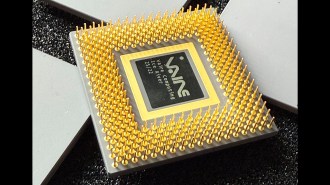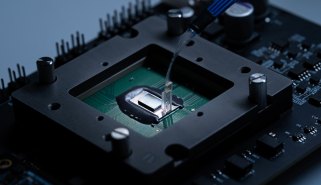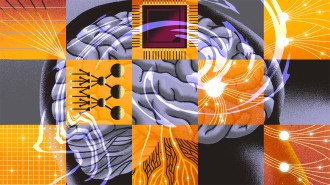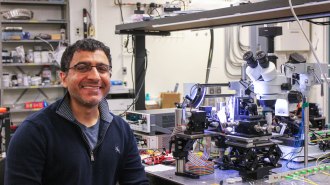- More than 2 years ago
A long-standing mystery about nuclear magnetic resonance has finally been solved, an advance that could lead to clearer MRI images for medical uses and could provide better control of atoms for quantum computers.
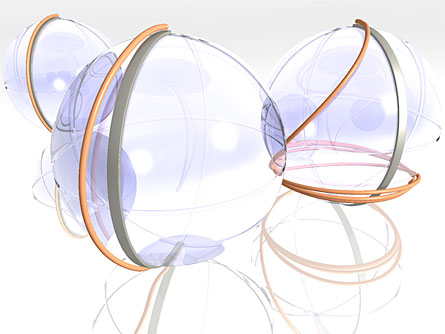
The mystery was in the delicate flipping of the magnetic spin axes of atoms inside a magnetic resonance imaging, or MRI, machine — or any device that employs nuclear magnetic resonance, or NMR, a way of using powerful magnetic fields to study matter.
Controlling this flip is like moving a full bowl of soup without spilling it, explains Philip Grandinetti, an expert in NMR at Ohio State University in Columbus. If you move infinitely slowly, the soup will remain calm in the bowl, a kind of motion called “adiabatic.” Move too quickly, the existing theory predicts, and the soup will spill — that is, you will lose control of the atoms’ magnetic axes.
Yet, “it’s well-known that you can push the system faster and it will still behave adiabatically when theory says it shouldn’t,” Grandinetti says. “The theory was predicting that things would fail when they in fact would work.”
Working with colleagues in France, Grandinetti developed mathematical equations that correctly predict this faster-yet-stable flipping behavior, described online November 25 in the Journal of Chemical Physics.
“By getting the math right, they show exactly, finally, how fast or slow this process can be applied,” comments Josef Zwanziger, a physical chemist and an expert in NMR at Dalhousie University in Halifax, Nova Scotia.
Flipping the magnetic spin axes of the atoms in a person’s body is one way to conduct MRI. Doctors place patients inside a large, doughnut-shaped magnet, and its strong magnetic field causes the magnetic spin axes of atoms in the patients’ bodies to line up with the field. A precise radio signal can then grab hold of these spin axes and slowly flip them over. After the atoms are flipped, letting them go and watching how long they take to flip back over enables the MRI machine to calculate an image of the patient’s innards.
Controlling this process requires moving slowly, the old theory said. But energy tied up in the flipping atoms gradually dissipates, so going slowly also means that the eventual signal returned by the atoms — the basis for calculating the image —becomes ever weaker.
“You can see your dilemma,” Grandinetti says. “The faster you can do these experiments then the stronger your signal will be.” A stronger signal means the MRI image will have better contrast and higher resolution, which would be useful for doctors and for medical research.
Grandinetti’s new theory employs an idea called superadiabaticity, which was pioneered in the 1980s by Sir Michael Berry, a mathematical physicist at the University of Bristol in the United Kingdom. Essentially, the theory takes into account the inertial forces acting on an object as it accelerates — akin to the centrifugal force you feel on a merry-go-round — thus showing how you can move the soup bowl more quickly without disturbing the soup.
With these more-accurate equations in hand, Grandinetti says he’s already working on software to operate MRI machines more accurately and produce better, higher-resolution images. Quantum computing also would involve controlling the spin axes of atoms, so the new theory could benefit efforts to manipulate those axes more skillfully.
Zwanziger points out another benefit of knowing how to flip the atoms’ spin axes more quickly: “You don’t have to have the patient holding still [in the MRI machine] for so long.”

